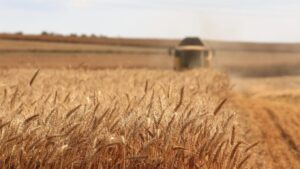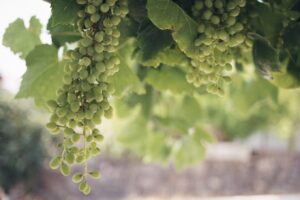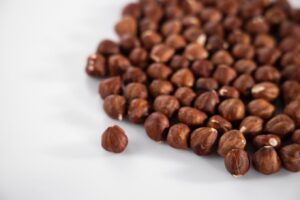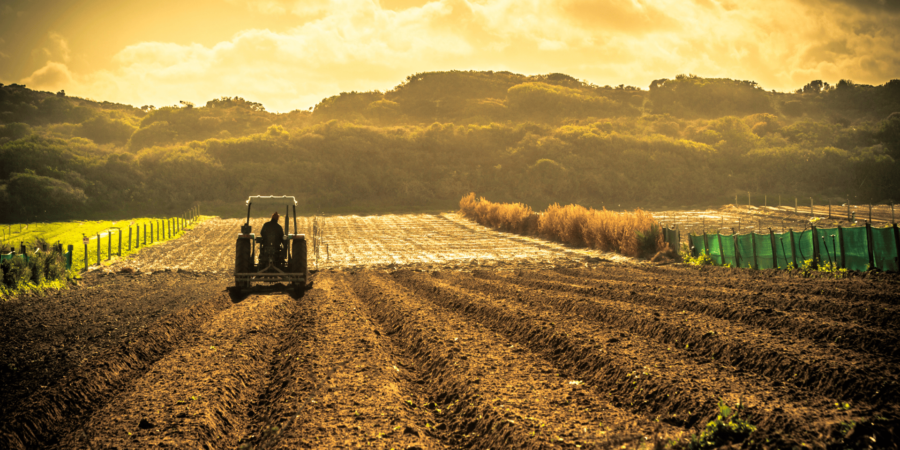Agricultural Overview in the Marmara, Aegean, Central Anatolia, and Black Sea Regions of Turkey
Turkey is located between 36° and 42° north latitude and 26° and 45° east longitude. It has a continental climate in the interior, a Mediterranean climate in the west and south, and a subtropical climate with hot and humid summers and warm and rainy winters in the north coastal regions. The country is situated in the Mediterranean belt.
The four seasons in the country and the diversity of landforms create special habitats for plants. It was reported by the WWF (2010) that one-third of the 11000 plants that grow naturally in Turkey are endemic. That is, they do not grow naturally anywhere else in the world. With a diverse range of climates and environments, Turkey is able to grow a wide variety of crops and raise many different types of livestock. In this article, we will explore the main agricultural activities in Turkey.

Marmara Region: Agricultural Overview
Located in the northwest of the country, the Marmara region is known for its fertile soil and mild climate. The region has a temperate climate with hot, dry summers and cool, wet winters. The Southern Marmara Region, particularly Bursa, boasts fertile land suitable for cultivating a variety of fruit, including strawberries, cherries, grapes, peaches, chestnuts, and mulberries. Sericulture, or silk production, is a traditional industry in Bursa, supported by the cultivation of mulberry trees. Moreover, wheat, barley, and oats are the main cereals grown in this region especially in Tekirdağ, which are used for a variety of purposes, including animal feed, breadmaking, and brewing.
The Marmara region is a major producer of vegetables, maize, rice, and sunflowers. In particular, sunflower production is prevalent in Edirne, Tekirdağ, and Kırklareli. According to the Institute of Agricultural Economics and Policy Development’s (IAEPD) report (2022), sunflower production in the region reached 2.4 million tonnes in 2021, with Tekirdağ and Edirne being some of the most productive provinces. The region is home to many greenhouses that allow farmers to extend the growing season and produce high-quality produce throughout the year.
Furthermore, livestock farming is also an important part of the agricultural sector in the Marmara region. The region is home to a number of large and modern livestock farms, which produce meat, milk, and other dairy products. The region is a major producer of poultry, as well as a significant producer of beef and lamb.

Aegean Region: Agricultural Overview
Located in the west of the country, the Aegean region has a Mediterranean climate with warm, dry summers and mild to cool, wet winters. Olives, figs, and citrus fruits are the main crops grown in the Aegean region, which are used for both domestic consumption and export. The region is known for the high quality of its olive oil and figs. According to IAEPD (2022) report, olive production is expected to increase by 36% compared to the previous year and reach 1750000 tonnes. Olive oil has found various applications, particularly in the cosmetics sector, through products such as soap, shampoo, cream, masks, and shower gel made with it.
In addition to these crops, the Aegean region is an important producer of a variety of vegetables, including tomatoes, peppers, and cucumbers. These crops are grown in open fields and greenhouses, and are used for both domestic consumption and export. The Aegean region boasts a number of vineyards that produce wine and other grape-based products. This region is famous for its high-quality wines, and its vineyards in Urla and Sirince, in particular, attract many tourists.
Raising livestock is also a significant aspect of agriculture in the Aegean region. The region is home to many small livestock farms, often owned by families, where sheep, goats, and cows are raised. The region is a significant producer of sheep and goat meat, as well as milk and other dairy products.

Central Anatolia Region: Agricultural Overview
The Central Anatolia region has a dry, continental climate and is a major producer of cereals, including wheat, barley, sugar beet and oats. These crops are grown on large, mechanized farms and are used for a variety of purposes, including animal feed, breadmaking, and brewing.
Konya is a significant producer of wheat and sugar in Turkey. The city is home to four sugar factories and 102 wheat producer companies. According to the IAEPD report for 2022, Konya, Eskisehir, and Kayseri are among the most productive provinces in sugar beet production, with an estimated output of 18.3 million tonnes in 2021 and a projection of 19 million tonnes for 2022.
The Central Anatolia region is also an important producer of sunflowers and wheat, which are grown on large, mechanized farms. The region is a major producer of sunflower oil, which is used for cooking and as a raw material for the production of biodiesel. As per the IAEPD (2022) report on wheat production, the highest production has taken place in Konya and wheat production is expected to increase by 10.5% and reach 19.5 million tonnes.
Raising livestock is also a significant aspect of agriculture in the Central Anatolia region. The region is home to numerous livestock farms that produce meat and dairy products.

Black Sea Region: Agricultural Overview
Located in the northeast of the country, the Black Sea region has a humid subtropical climate with hot, humid summers and cool, wet winters. The region is an important producer of tea, which is grown on large, mechanized farms. According to CAYMER’s data for 2023, Turkey primarily uses its tea production for domestic consumption, with only a small portion being exported. The province of Rize has the highest production, and Turkey’s total production in 2021 was 1.5 million tonnes, according to the IAEPD report for 2022.
In addition to tea, the Black Sea region is also an important producer of a variety of crops, including maize and hazelnut. Hazelnuts have a variety of uses, including in the chocolate and pastry industry and as a refined edible oil. They can also be utilized in various sectors such as the chemical and feed industries. Turkey’s hazelnut production in 2021 was 684 thousand tonnes, with Ordu province leading the way at 167 thousand tonnes, according to the IAEPD report for 2022.




